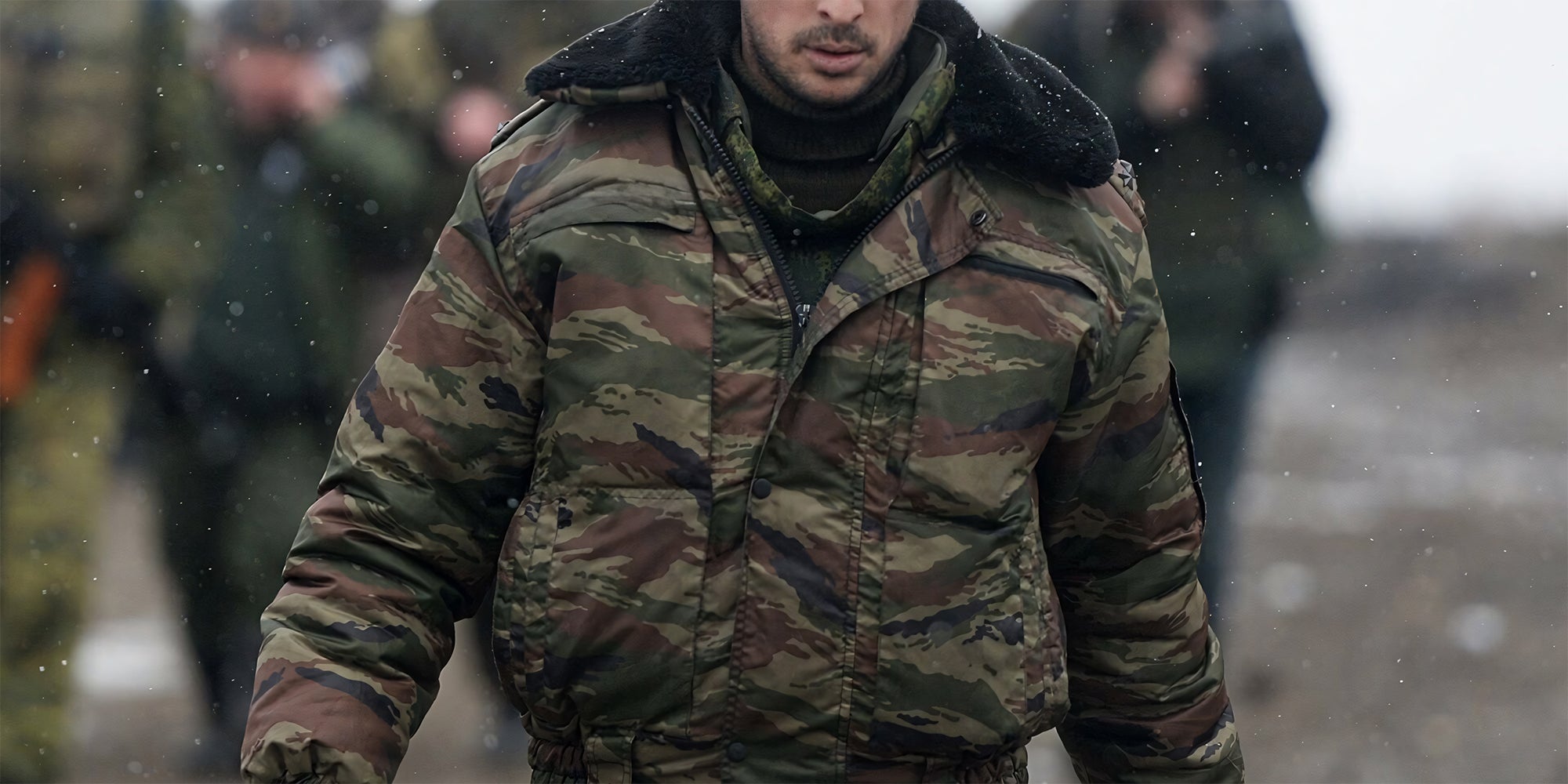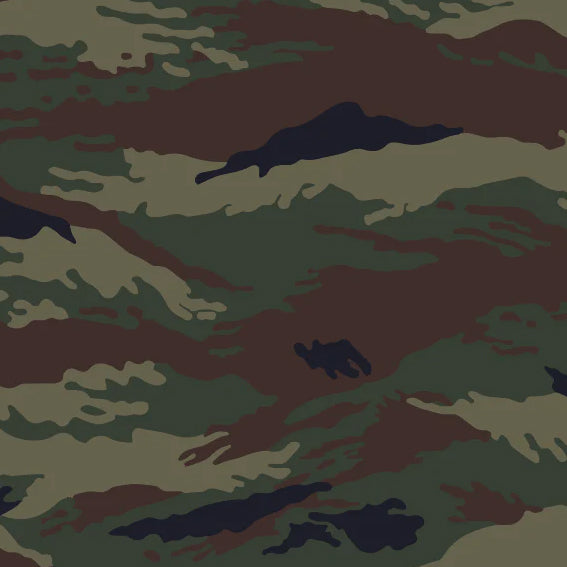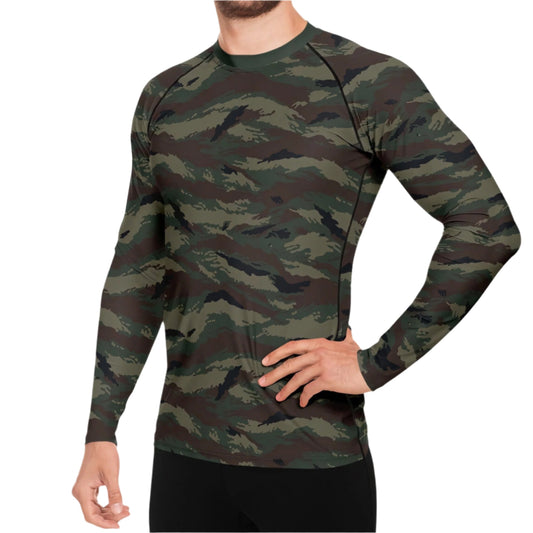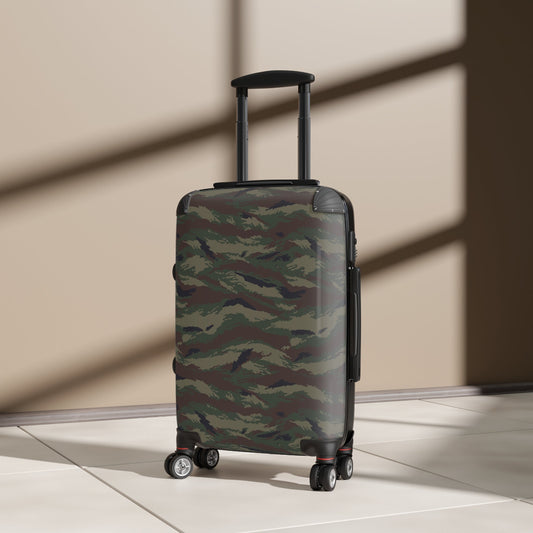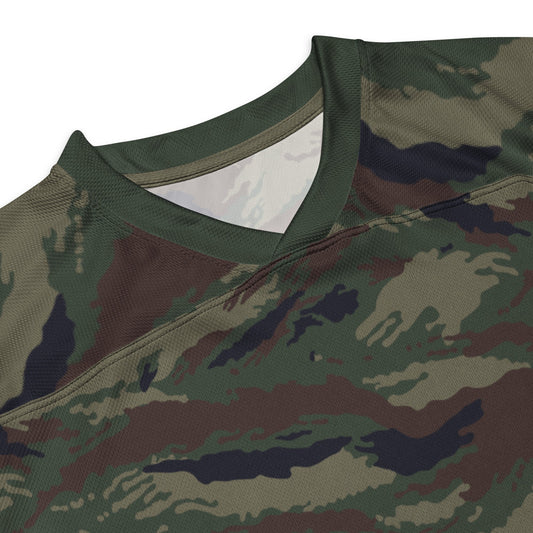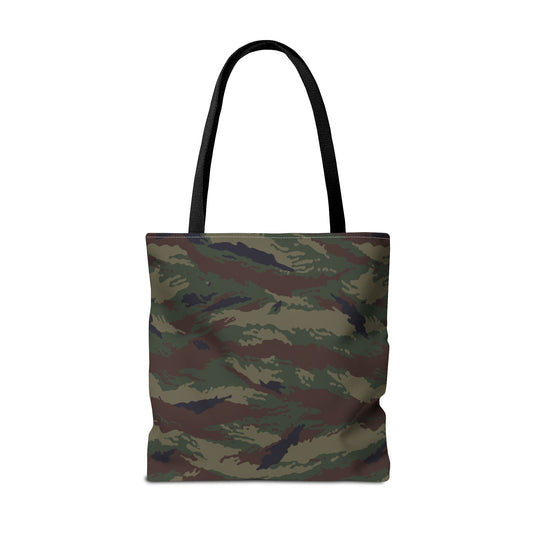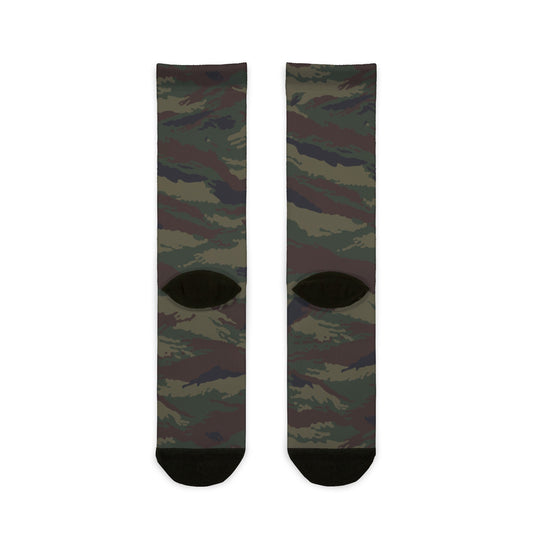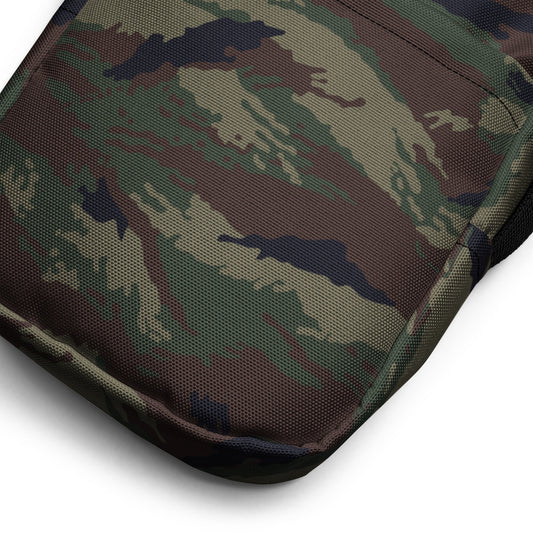The pattern consists of irregular, slanted green, brown, and black stripes, optimized to break up the wearer’s silhouette in dense forests, thick underbrush, and shaded woodland environments. The wavy, organic striping mimics the interplay of light and shadow in natural settings, making it particularly effective in low-light conditions and camouflage at a distance.
Since its introduction, Kamysh Woodland Tigr has remained in use among Russian military, paramilitary, and law enforcement units, particularly those engaged in counterterrorism, reconnaissance, and tactical operations in forested regions. It has also been employed by Spetsnaz groups and private military contractors due to its practicality and effectiveness in combat and field applications. The Kamysh Woodland Tigr camouflage is not just a functional pattern; it also holds historical and aesthetic value, symbolizing Russia’s approach to tactical gear and military design. Its similarity to earlier Southeast Asian tiger stripe patterns has led to comparisons with Vietnam War-era camouflage, but its distinct coloration and layout make it uniquely Russian.
